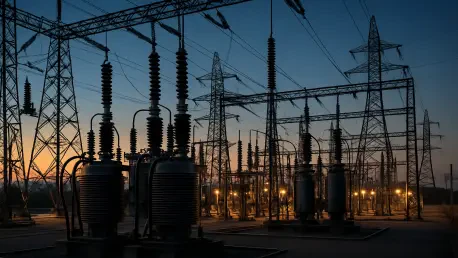What happens when aging energy infrastructure meets cutting-edge technology? In the heart of America’s power grid, a quiet revolution is unfolding as AML3D, an Australian leader in additive manufacturing, introduces its ARCEMY X 6700 to the Tennessee Valley Authority (TVA), the nation’s sixth-largest power supplier. This isn’t just a new piece of equipment rolling into a facility; it’s a potential game-changer for how critical repairs are handled in an industry under constant pressure to deliver uninterrupted energy to millions.
The significance of this development cannot be overstated. With TVA serving as a cornerstone of U.S. public utilities, the deployment of ARCEMY X at their Muscle Shoals, Alabama, facility signals a shift toward innovative solutions for maintaining vast, complex systems. This story isn’t merely about a machine—it’s about redefining efficiency and resilience in energy infrastructure, setting a precedent for utilities nationwide to rethink outdated repair methods.
A Bold Step for Energy Infrastructure
At the core of America’s energy challenges lies the daunting task of upkeep for decades-old systems. Power plants and grids face relentless wear, often requiring lengthy downtimes for repairs that disrupt service and inflate costs. AML3D’s arrival at TVA with the ARCEMY X 6700 offers a glimpse into a future where such delays could become relics of the past, thanks to on-site, rapid manufacturing capabilities.
This technology, born from additive manufacturing, builds components layer by layer, slashing the time needed to source or produce replacement parts. For TVA, which powers millions of homes and businesses across seven states, this means a potential reduction in operational hiccups, ensuring a steadier flow of electricity even when equipment falters.
Why Additive Manufacturing Is a Game-Changer
Beyond just speed, additive manufacturing addresses a deeper issue: the logistical maze of traditional supply chains. Energy providers often wait weeks or months for specialized parts, a delay that can cripple operations during peak demand. AML3D’s solution, embodied in the ARCEMY X, allows for direct production at the point of need, minimizing dependency on distant suppliers.
This shift holds broader implications for the sector. As utilities grapple with increasing energy demands—projected to rise by 15% over the next decade per industry estimates—adopting such technologies could mean the difference between blackouts and reliability. TVA’s decision to integrate this system reflects a growing recognition among industry leaders that innovation is no longer optional but essential.
Inside the ARCEMY X Deployment at TVA
The ARCEMY X 6700, the first unit crafted at AML3D’s U.S. Technology Center in Stow, Ohio, now operates within TVA’s Alabama facility, marking a pivotal entry into the utilities market. Selected through a rigorous competitive bidding process, this machine stood out for its precision and adaptability in addressing power generation repair needs, proving its worth against numerous alternatives.
This deployment is more than a single contract; it’s a launchpad for AML3D’s ambitions across multiple sectors. With potential applications in aerospace, oil and gas, and marine industries, the success at TVA paves the way for broader adoption. Moreover, discussions with the U.S. Navy hint at a demand for up to 100 ARCEMY systems by 2030, showcasing the scalability of this technology for large-scale, critical operations.
Leadership Perspectives on a Milestone Achievement
AML3D’s leadership sees this moment as a validation of their vision. Pete Goumas, President US, highlighted the competitive edge of their technology, stating, “Securing the TVA contract against strong contenders confirms that ARCEMY X is unmatched for high-stakes applications.” This sentiment reflects confidence in the machine’s ability to meet the exacting standards of a major utility provider.
CEO Sean Ebert echoed this optimism with a global outlook, noting, “The TVA partnership endorses our U.S.-focused strategy, and there’s strong potential to replicate this success in markets like the UK and Australia.” These insights reveal a dual focus—solidifying a foothold in America while eyeing international expansion, bolstered by parallel integrations into defense supply chains such as the U.S. Navy’s operations.
Practical Impacts and Future Applications
For energy providers and other industries, the ARCEMY X presents tangible benefits that can transform operations. On-demand part production directly at facilities like TVA’s cuts downtime dramatically, addressing urgent repair needs without the wait for external shipments. This capability ensures that power generation can continue with minimal interruption, a critical factor during high-demand periods.
Customization is another key advantage, allowing components to be tailored to specific infrastructure challenges, ensuring a perfect fit for unique systems. Additionally, industries can adopt a phased approach, starting with pilot programs to test compatibility before full-scale implementation across multiple sites or sectors, a strategy mirrored in TVA’s initial deployment. These practical steps, rooted in real-world success, offer a roadmap for modernizing maintenance across diverse fields.
Reflecting on a Transformative Partnership
Looking back, AML3D’s collaboration with TVA marked a turning point for how energy infrastructure challenges are tackled. The successful integration of the ARCEMY X 6700 into a major utility’s repair fleet demonstrated that additive manufacturing could indeed redefine operational efficiency. This partnership laid a foundation for addressing long-standing issues with speed and precision.
As industries continue to evolve, the next steps involve scaling these innovations to meet growing demands. Energy providers and other sectors should consider pilot projects to explore additive manufacturing’s potential within their operations. Meanwhile, policymakers and industry leaders might focus on fostering environments that encourage such technological adoption, ensuring that the benefits of systems like ARCEMY X reach far beyond a single facility, shaping a more resilient future for critical infrastructure.









